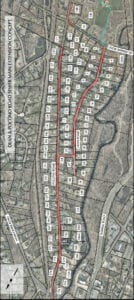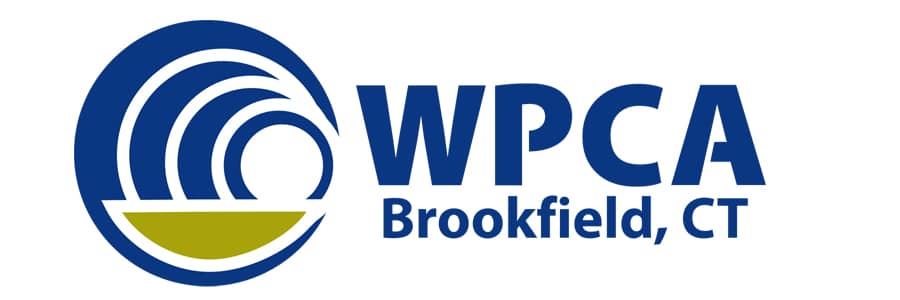Brookfield Grant Proposal 2023
What is the problem to be addressed by the project and its relevance to Long Island Sound?
 This proposed sewer extension project addresses CCPM Implementation Actions WW-1 & WW-4 to reduce nutrient loads into waterways feeding LI Sound. (1) It further addresses LISS CCMP Themes LONG-TERM SUSTAINABILITY for an overall decrease of water pollutants. It also touches on ENVIRONMENTAL JUSTICE for fair treatment of all people regardless of … income with respect to the development. (2) Properties impacted are in the lower 50% of the value of homesteads in Brookfield and 70% of them are valued below 25% of all Brookfield residential properties. Consequently, the properties can support only about three-quarters of the required cost of $2,600,000 for a municipal sewer system. This is the net cost after the anticipated 20% CWF grant. The requested LISFF grant would close the gap.
This proposed sewer extension project addresses CCPM Implementation Actions WW-1 & WW-4 to reduce nutrient loads into waterways feeding LI Sound. (1) It further addresses LISS CCMP Themes LONG-TERM SUSTAINABILITY for an overall decrease of water pollutants. It also touches on ENVIRONMENTAL JUSTICE for fair treatment of all people regardless of … income with respect to the development. (2) Properties impacted are in the lower 50% of the value of homesteads in Brookfield and 70% of them are valued below 25% of all Brookfield residential properties. Consequently, the properties can support only about three-quarters of the required cost of $2,600,000 for a municipal sewer system. This is the net cost after the anticipated 20% CWF grant. The requested LISFF grant would close the gap.
The problem to be addressed is to manage wastewater needs for 90 parcels, predominately residential properties located adjacent to the Still River along Dean and Pocono Roads. In the study area, soil types and surficial geology have characteristics of shallow depth to groundwater, restrictive soils, and shallow depth to impermeable layer. Recent work shows the area properties, developed circa 1960, are not conducive to the use of individual On-Site Wastewater Treatment Systems (OWTS), aka septic systems. These properties have tested positive for E. coli contamination of the surface waters. The study area is laced with creeks, drainage ditches and wetlands that would, along with the restrictive soils and surficial geology, allow pathways for E. coli and nutrient contamination by septic systems. (Dean & Pocono Roads Wastewater Management Plan, Lombardo Associates, Inc., June 5, 2020) (3)
The Still River continues to be one of the most polluted in the Housatonic Valley. Tributary streams in the watershed, including the majority of the Still River mainstem, are classified as “impaired” by CT DEEP for recreational use and/or aquatic life due to poor water quality. (Still River Watershed Management Plan, Housatonic Valley Association with support from the Still River Partners, September 2019) (4)
What is the solution to be pursued by the project?
This study area along the Still River has been the subject of a 2020 sophisticated needs analysis for which there is a 57-page report. It is recommended that the subject area be sewered and connected to the existing Brookfield sewer system. In 2023, a CWF planning grant draft report is completed showing a probable design with costs.(5) Thus, the project is “shovel ready” awaiting funding. Removal of OWTS for 85 homes will avoid 10,000 gallons/day of septage discharge containing 0.8 lbs/day P and 3 lbs/day total N with failing and failed septic systems. (6)(7) By comparison, the regional Danbury WWTP handling 8 million gallons/day, which supplies most of the Still River volume through Brookfield, is limited to 7 lbs P/day.
Where is the project located? Provide a site or watershed or waterbody, and city/ state.
Dean, Pocono and Silvermine Roads, Brookfield CT with 91 Residential properties, 85 developed are all located on low-lying lots along the Still River in the Housatonic Watershed.
Who is the applicant? (Organization, contact name, email, telephone).
Brookfield WPCA, Alison Kennedy, alison@brookfieldwpca.org, 203-775-7319 Ext. 1007
What is the approximate size of the grant request?
The $500,000 implementation grant request is for final design drawings in 2023 sufficient to prepare bids and subsequent construction can be completed in 2024 if the grant is received. Property owners will pay the balance with a conventional Benefit Assessment.
(1) LI Sound Comprehensive Conservation Management Plan (CCMP) Pages 16-17
(2) LISFF Grant Metrics and Action Tracking
(3) Brookfield – Dean and Pocono Road Wastewater Management Plan (brookfieldwpca.org)
(4) Still River Watershed Existing Conditions Report
(5) Dean-Pocono Sewer Alternates Analysis DRAFT Feb 2023
(6) Per capita phosphorus loading from domestic sewage – ScienceDirect
(7) Characteristics of Residential Wastewater – App4Water (Table 1)
